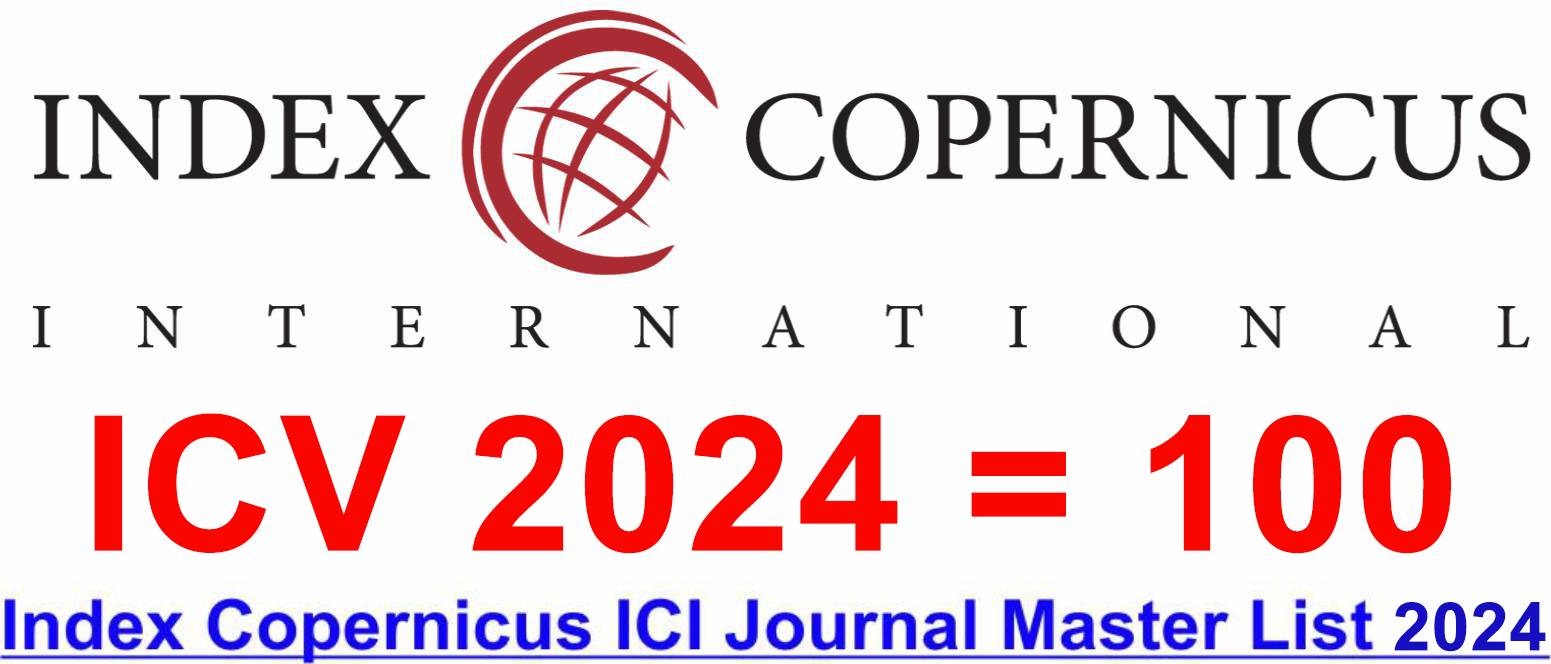Analysis on Economic Inequality in India
DOI:
https://doi.org/10.46977/amt.2024.v05i01.001Keywords:
Economic Inequality, Top10% Income Share, Bottom 50% Income Share, Gap of Income Share Top10% And Bottom 50%, ARIMA Forecast ModelAbstract
The paper examines income inequality in India from 1951 to 2022, highlighting trends and nonlinear patterns in the top 10% and bottom 50% income shares of national income, as well as the gap between these shares. The analysis employs semi-log and double log regression models, the HP filter model, the Hamilton regression filter model, and the ARIMA (p, d, q) forecast model. The findings indicate that the top 10% income share increased steadily, while the bottom 50% share decreased monotonically. The gap between these shares narrowed until the 1980s, after which it widened. All trends are cyclical, with identifiable peaks and troughs. GDP has less influence than GDP per capita on the top 10% income share increase, while the reverse is true for the bottom 50%. The nature of the gap is U-shaped, with a 1% annual increase in GDP and GDP per capita leading to a 0.33% and 0.45% increase in the gap, respectively. The ARIMA (2,1,2) forecast model for the income share gap in 2050 suggests a convergence towards equilibrium in a stable manner, although it remains nonstationary due to an insignificant Moving Average process. This implies that inequality will not completely disappear by 2050. Policy recommendations are proposed for future discussions.
Downloads
References
Ahluwalia, M. S. (2001). State level performance under economic reforms in India. Working Paper-96, Stanford University. 91-125. https://kingcenter.stanford.edu/sites/g/files/sbiybj16611/files/media/file/96wp_0.pdf
Banerjee, A., & Piketty, T. (2001). Are the rich growing richer: Evidence from Indian tax data. Processed. http://piketty.pse.ens.fr/fichiers/public/BanerjeePiketty2004b.pdf
Bharti, N. K., Chancel, L., Piketty, T., & Somanchi, A. (2024). Income and Wealth Inequality in India, 1922-2023: The Rise of the Billionaire Raj. https://shs.hal.science/halshs-04563836/
Box, G. E., & Jenkins, G. M. (1976). Time series analysis: Forecasting and control San Francisco. Calif: Holden-Day. https://www.scirp.org/reference/referencespapers?referenceid=1969833
Chancel, L., & Piketty, T. (2017). Indian Income Inequality, 1922-2015 From British Raj To Billionaire Raj? Halshs-02794488. Https://Shs.Hal.Science/Halshs-02794488/File/2017-11_.Pdf
Chancel, L., & Piketty, T. (2019). Indian income inequality, 1922‐2015: from british raj to billionaire raj?. Review of Income and Wealth, 65, S33-S62. https://doi.org/10.1111/roiw.12439
Chancel, L., & Piketty, T. (2021). Global income inequality, 1820–2020: the persistence and mutation of extreme inequality. Journal of the European Economic Association, 19(6), 3025-3062. https://doi.org/10.1093/jeea/jvab047
Cleveland, R. B., Cleveland, W. S., McRae, J. E., & Terpenning, I. (1990). STL: A seasonal-trend decomposition. J. off. Stat, 6(1), 3-73. https://www.nniiem.ru/file/news/2016/stl-statistical-model.pdf
Credit Suisse Research Institute (2022). Global Wealth Data Book-2022. Accessed On 12th December 2023
Https://Www.Credit-Suisse.Com/Media/Assets/Corporate/Docs/About-Us/Research/Publications/Global-Wealth-Databook-2022.Pdf
Credit Suisse Research Institute (2023). Global Wealth Report-2023. Accessed On 12 Th December 2023. Https://Shorturl.At/G1wef
Hai Anh Dang, H. A. D., & Lanjouw, P. (2018). Inequality in India on the rise. https://www.cabidigitallibrary.org/doi/full/10.5555/20193240007
Deaton, A., & Dreze, J. (2002). Poverty and inequality in India: a re-examination. Economic and political weekly, 3729-3748. https://rpds.princeton.edu/sites/g/files/toruqf1956/files/media/deaton_dreze_poverty_india.pdf
European Commission (2021). Addressing Income Inequality Through Development Cooperation. Publications Office Of The European Union. Https://Op.Europa.Eu/En/Publication-Detail/-/Publication/F7afdb18-20d6-11ec-Bd8e-01aa75ed71a1
Ghatak, M., Raghavan, R., & Xu, L. (2022, September). Trends in economic inequality in India. In The India Forum (Vol. 19). https://www.theindiaforum.in/economy/trends-economic-inequality-india
Ghosh, J., & Chandrasekhar, C. P. (2003). Per capita income growth in the states of India. URL: http://www. macroscan. com.
Hamilton, J. D. (2018). Why you should never use the Hodrick-Prescott filter. Review of Economics and Statistics, 100(5), 831-843. https://doi.org/10.1162/rest_a_00706
Hodrick, R. J., & Prescott, E. C. (1997). Postwar US business cycles: an empirical investigation. Journal of Money, credit, and Banking, 1-16. https://doi.org/10.2307/2953682
John, J. S. (2020). Economic Inequality In India: A Brief Analysis. Social And Political Research Foundation. https://sprf.in/economic-inequality-in-india-a-brief-analysis/
Organisation For Economic Co-Operation And Development. (2021). Does Inequality Matter?: How People Perceive Economic Disparities And Social Mobility. OECD Publishing. https://doi.org/10.1787/3023ed40-en
Lawson, M., & Martin, M. (2018). The Commitment to Reducing Inequality Index 2018: A global ranking of governments based on what they are doing to tackle the gap between rich and poor. http://dx.doi.org/10.21201/2018.3415
Pal, P., & Ghosh, J. (2007). Inequality in India: A survey of recent trends. http://www.chereum.umontreal.ca/activites_pdf/Session%201/Inequality%20in%20India%20(1).pdf
Polacko, M. (2021). Causes and consequences of income inequality–an overview. Statistics, Politics and Policy, 12(2), 341-357. https://doi.org/10.1515/spp-2021-0017
Sen, A., & Himanshu. (2004). Poverty and inequality in India: Economic and Political Weekly, 39(38), 4247-4263. https://www.jstor.org/stable/4415560
Solanki, D. (2022). Economic Inequalities in India. Available at SSRN 4192739. https://dx.doi.org/10.2139/ssrn.4192739
Somanchi, A. (2023). Income Inequality In India, 2000-2020 (Doctoral Dissertation, Msc Thesis, Paris School Of Economics). http://piketty.pse.ens.fr/files/Somanchi2023.pdf
Stoller, K. (23 April 2020). These Countries Have Gained The Most Billionaires In The Past Decade. Forbes. Https://Www.Forbes.Com/Sites/Kristinstoller/2020/04/23/These-Countries-Have-Gained-The-Most-Billionaires-In-The-Past-Decade/
Sundaram, K., & Tendulkar, S. D. (2003). Poverty in India in the 1990s: An analysis of changes in 15 major states. Economic and Political Weekly, 38(14),1385-1393. https://www.jstor.org/stable/4413403
Yadav, A., & Yadav, M. (2023). Government Policies to Reduce Income Inequality In India. Journal Of Emerging Technologies And Innovative Research,10(10), D37-D47. Https://Www.Jetir.Org/Papers/JETIR2310318.Pdf
Bharti, N. K. (2018). Wealth Inequality, Class and Caste in India, 1951-2012. piketty. pse. ens. fr) Paris School of Economy. http://piketty.pse.ens.fr/files/Bharti2018.pdf
Published
How to Cite
Issue
Section
Copyright (c) 2024 Advancement in Management and Technology (AMT)

This work is licensed under a Creative Commons Attribution-NonCommercial 4.0 International License.
















